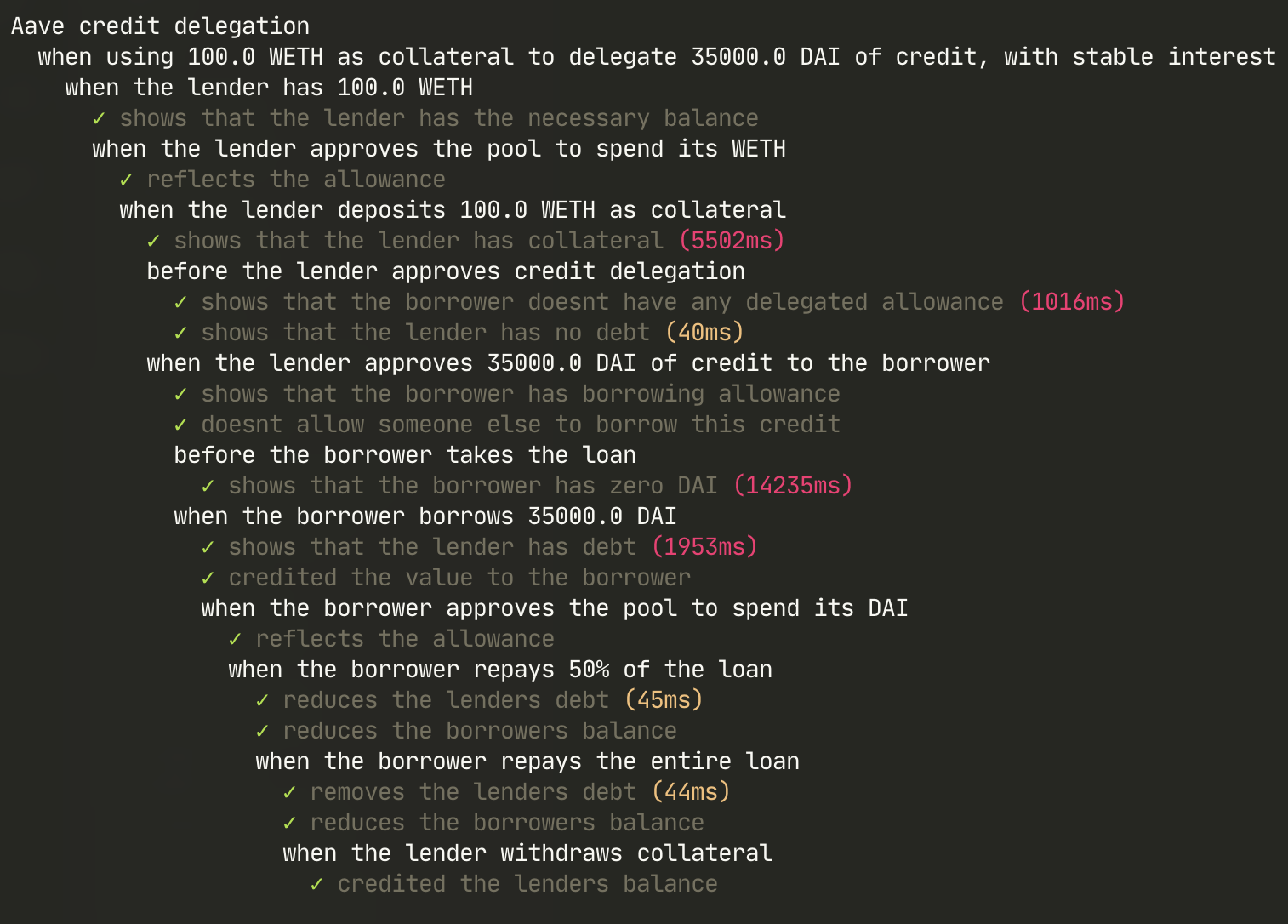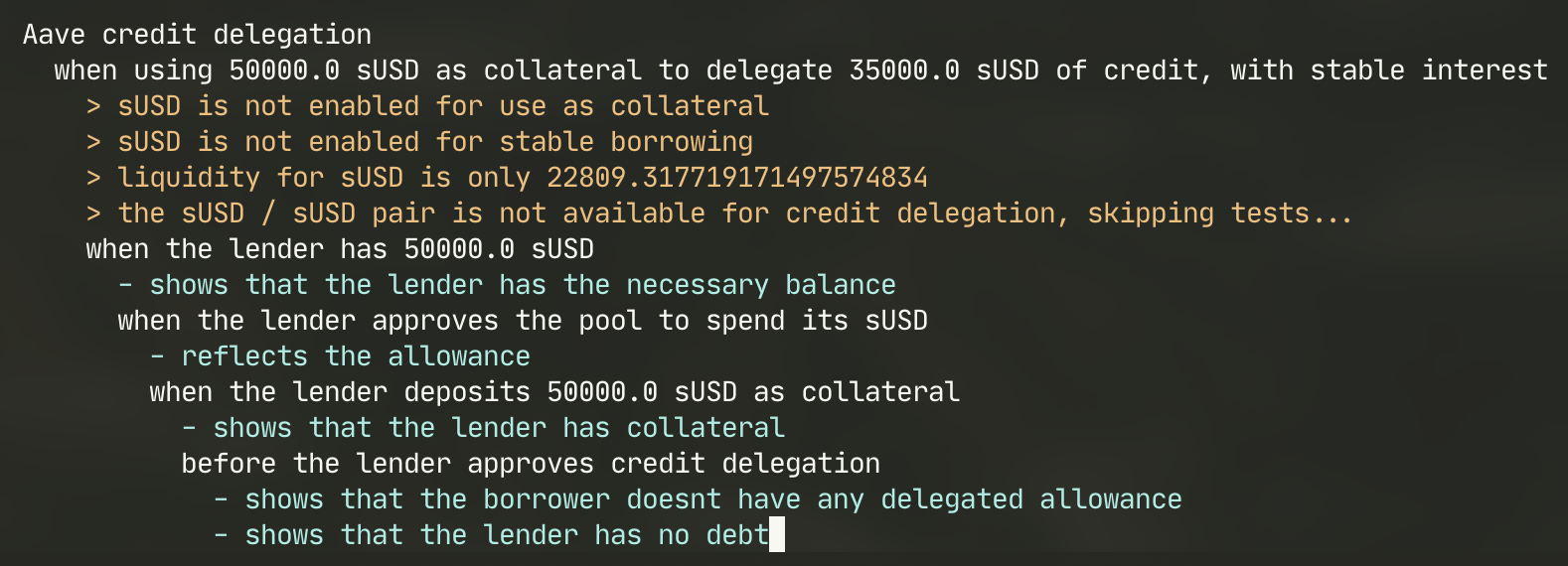This project allows you to validate that a given collateral/loan pair can be used for credit delegation, provides instructions for performing the delegation via direct contract interaction, and provides some tools for simulating the delegation via forking.
- Owner deposits collateral in Aave via its LendingPool
- Owner uses the data provider contract to retrieve the associated DebtToken for the borrower's desired asset to borrow
- Owner interacts with the DebtToken contract to approve the borrower to take out a given amount of credit on the asset
- Borrower borrows in Aave via its LendingPool increasing the Owner's
totalDebtETH - Eventually, Borrower repays loan, decreasing the Owner's
totalDebtETH - Eventually, Owner withdraws collateral from Aave
- LendingPool:
0x7d2768dE32b0b80b7a3454c06BdAc94A69DDc7A9 - DataProvider:
0x057835Ad21a177dbdd3090bB1CAE03EaCF78Fc6d - dsDAI:
0x778A13D3eeb110A4f7bb6529F99c000119a08E92 - DAI:
0x6B175474E89094C44Da98b954EedeAC495271d0F
- LendingPool: https://etherscan.io/address/0x7d2768dE32b0b80b7a3454c06BdAc94A69DDc7A9#readProxyContract
- DataProvider: https://etherscan.io/address/0x057835Ad21a177dbdd3090bB1CAE03EaCF78Fc6d#readContract
- dsDAI: https://etherscan.io/address/0x778A13D3eeb110A4f7bb6529F99c000119a08E92#readProxyContract
- DAI: https://etherscan.io/address/0x6B175474E89094C44Da98b954EedeAC495271d0F
https://docs.aave.com/developers/v/2.0/the-core-protocol/lendingpool
- Verify the validity of the credit delegation parameters
- Automated: as described in "Validating a credit delegation pair" using unit tests
- Manually: In app.aave.com, make sure that the deposit asset is available for use as collateral, and that the borrow asset is available for stable/variable borrow, and has sufficient liquidity
- Use app.aave.com to deposit the desired collateral as
lender - Use Etherescan for
DataProvider.getReserveTokensAddresses(asset: <address of the token to delegate>)to identify the associated debt token - From the previous point, use
stableDebtTokenAddressorvariableDebtTokenAddressdepending on your desired interest rate model, then click on the address to be able to interact with the contract via Etherscan - Use
DebtToken.approveDelegation(delegatee: <credit delegation beneficiary>, amount: <amount of credit to approve>). If the associated DebtToken doesn't have verified sources, or doesn't have its proxy properly set up in Etherscan, build a UI with oneclickdapp using interfaces fromartifacts/contracts/interfaces - Use
DebtToken.borrowAllowance(fromUser: <lender>, toUser: <borrower>)to verify thatborrowhas been approved for delegated credit - Use app.aave.com to borrow as
borrower
Clone and install the repo
$ git clone clone git@github.com:ajsantander/aave-credit-delegation.git
$ cd aave-credit-delegation
$ npm install
Copy .env.sample to .env and specify your Infura private key, or Ethereum mainnet provider url. This will be used for forking mainnet and running simulations/checks against the fork.
To validate a pair, edit test/CreditDelegation.test.js to enter the desired collateral/loan pair, amounts, and interest model type, and then run the tests.
This will start a local fork of mainnet and simulate the credit delegation process with the specified parameters.
Edit testPairs in test/CreditDelegation.test.js with your desired parameters
Run npm test
If any test is skipped or fails, credit delegation may not be available for your desired parameters.

